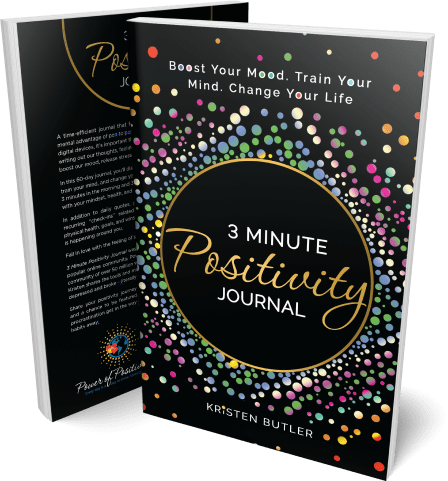Here’s how you can turn a traumatic experience into triumph.
We all face challenges that shape us throughout our lives. Sometimes, these challenges include traumatic experiences that leave lasting marks. However, there’s a powerful truth that needs to be embraced: while your past trauma is a part of your story, it’s not the whole story. You are more than your past. So, moving beyond trauma and toward triumph is not just possible.
Indeed, it is a healing journey worth taking. It is how you reclaim your mental, emotional, and physical wellness after a traumatic event.
Understanding the Impact of Trauma
It’s important to start by recognizing the profound impact trauma can have. Trauma, whether from a single event or a series of traumatic experiences, can affect every aspect of your life. It can influence how you think, feel, and behave, often leading to challenging emotions and reactions.
According to the National Institutes of Health (NIH), trauma can result in significant stress. It can contribute to numerous types of mental health issues, including anxiety, depression, and post-traumatic stress disorder (PTSD). These conditions can have ripple effects on your life. Indeed, they can influence your relationships, work, and overall quality of life.
The Power of Releasing Trauma (so it no longer controls you)
Letting go of the grip that past trauma has on you is not about denying what happened or minimizing its impact. It’s about acknowledging your experiences and then choosing to move forward. This process is often complex and can require time, patience, and support. But the journey toward healing and moving on is empowering and liberating.
Acknowledge and Accept the Trauma
The first step in turning trauma into triumph is to acknowledge and accept your traumatic experiences. This idea doesn’t mean agreeing that it was okay. Instead, you start recognizing that it is a part of your history. Acceptance is crucial for moving forward; healing can’t begin without it.
Embracing Change and Growth
Moving on from trauma is an opportunity for personal growth and transformation. It’s about redefining yourself not by what happened to you but by who you are now and aspire to be. This change often involves developing new coping strategies, building resilience, and finding new ways to find joy and meaning in your life.
The Role of Support Systems
One of the key elements in moving beyond trauma is having a strong support system. This network can include friends, family, therapists, support groups, or any combination. These support systems provide a safe space to process your experiences, feel understood, and receive encouragement as you navigate your healing journey.
Developing Healthy Coping Mechanisms
Developing healthy coping mechanisms is crucial in dealing with the aftermath of trauma. This activity might include mindfulness practices, exercise, creative expression, or engaging in activities that bring you joy and relaxation.
What is the best activity? Well…there’s no right or wrong answer. You can do whatever makes YOU happy. Some examples of some ways to blow off the steam include these:
- Running, jogging, or walking
- Yoga or stretching
- Escaping into the pages of a book
- Doing a puzzle
- Make a craft or do any hobby that relaxes you.
These practices help manage stress and anxiety and contribute to overall mental and physical well-being.
Transform Pain into Purpose after a Traumatic Experience
Your journey through trauma and beyond is uniquely yours, and there is power in owning and sharing your story. That doesn’t mean you need to share every detail with everyone, but rather find strength in the fact that you have survived and are moving forward. Embracing your story can be an empowering step toward healing.
Many find a sense of triumph in using their experiences to help others. That might involve advocacy or volunteering to help others heal after a traumatic experience.
It can also simply mean sharing your trauma story to inspire and support others who have faced similar challenges. Transforming pain into purpose can provide a sense of meaning and fulfillment.
The Importance of Self-Care
Self-care is a necessary part of the healing process. It’s about consciously taking care of your physical, mental, and emotional health. That can include getting enough rest, eating healthily, staying active, and doing things you love. Remember, taking care of yourself is not selfish—it’s necessary.
This emotional self-care can involve maintaining a positivity journal, a powerful tool for transforming negative thoughts into positive ones and rebuilding the confidence and self-esteem often eroded by traumatic experiences.
The Role of a Positivity Journal in Self-Care
A positivity journal is a dedicated space to focus on positive experiences, thoughts, and feelings. Here’s how it can be a transformative part of your self-care routine:
- Daily Reflections: Commit to writing in your journal every day, even if it’s just for a few minutes. This regular practice helps to develop a habit of focusing on positivity.
- Gratitude Entries: Start or end each entry by listing things you are grateful for. Gratitude can shift your focus from what’s missing or negative in your life to what is present and positive.
- Positive Experiences: Write about positive experiences you had during the day, no matter how small. It could include a pleasant conversation, a moment of laughter, or an achievement at work.
- Shift Negative Thoughts: When you notice negative thoughts (like your traumatic experience), write them down and challenge them. Try to reframe these thoughts into a more positive or realistic light. For example, instead of “I can’t do anything right,” you might write, “I had a setback today, but I’ve succeeded in many other instances.”
- Celebrate Small Wins: Acknowledge and celebrate your small victories in the journal. Even in small steps, recognizing your progress can boost your mood and self-esteem.
- Set Intentions: Use your journal to set positive intentions for the day or week. That can help you start your day with a positive mindset and a clear focus.
- Reflect on Growth: Periodically, reflect on your entries to reflect on your growth. You’ll soon start to notice a gradual shift in your mindset and attitude over time.
- Mindfulness and Affirmations: Incorporate mindfulness practices and positive affirmations into your journaling. Write down affirmations that resonate with you and reflect on them.
- Creative Expression: Feel free to get creative with your journal. Use colors, stickers, or doodles to express your emotions and thoughts. This creative process can be therapeutic in itself.
- Safe Space for Emotions: Remember that your positivity journal is a judgment-free zone. It’s a safe space to express your feelings honestly and openly.
Why a Positivity Journal Works
Maintaining a positivity journal helps your brain recognize and appreciate the positive aspects of life, which can be especially challenging in the aftermath of a traumatic experience. It encourages a shift from a mindset often dominated by harmful thoughts to one that acknowledges and celebrates positive experiences and personal strengths. Studies prove how this practice can improve mood, reduce stress, and a greater sense of overall wellness.
Furthermore, the physicality of writing itself can be therapeutic. It allows for a constructive outlet for expressing emotions and organizing thoughts, which can be particularly beneficial for those recovering from traumatic experiences. Over time, this practice can significantly contribute to rebuilding self-esteem and confidence, fostering a more positive and hopeful outlook.
Writing in a positive thinking journal is a valuable self-care tool for healing from trauma. It’s an easy and powerful way to nurture mental and emotional health. Plus, it helps you build a habit of positivity and gratitude that can lead to lasting change in how you view yourself and the world around you.
Setting Boundaries for Healing
Setting boundaries is another critical aspect of moving on from trauma. It means you must master the art of saying now. Then, you start protecting your energy and distancing yourself from people or situations that are harmful or triggering. Setting boundaries is a way of honoring your own needs and prioritizing your well-being.
Why Boundaries with Family Are Important
Setting boundaries with family can be challenging because of the emotional ties and dynamics involved. However, it’s important to remember that healthy boundaries are a form of self-care and self-respect. They allow you to heal on your terms and can improve family relationships by fostering mutual respect and understanding.
Having these conversations can also help your family understand your healing process better and how they can support you. It’s about creating an environment where you feel safe and supported, which is crucial for anyone recovering from trauma.
Setting boundaries with your family is a significant step in your healing journey. It’s about protecting your emotional space, promoting healthy family dynamics, and ensuring your needs are met as you work towards healing and growth. Remember, it’s okay to prioritize your well-being. Indeed, setting boundaries is a fundamental part of that process.
Here’s a guide on how to have conversations about boundaries with your family:
Preparing for the Conversation
- Understand Your Needs: Before discussing boundaries with your family, clearly understand what you need from them. These needs could be space or support. It might also be respect for your privacy… or anything that helps you feel safe and respected.
- Choose the Right Time and Place: Select a time and place where you can talk without interruptions and where everyone feels comfortable. Avoid times of high stress or conflict.
- Plan Your Words: Think about how to express your needs clearly and calmly. You should practice or write down what you want to say.
Having a Conversation About Your Boundaries
- Express Your Feelings: Start the conversation by stating your feelings. Use “I” statements to avoid sounding accusatory. For example, “I feel overwhelmed when I’m constantly asked about my personal life.”
- Be Clear and Specific: Clearly and specifically describe the boundaries you need. For instance, “I need to have my personal space respected, and I’d appreciate it if my room is treated as private.”
- Explain the Importance: Help your family understand why these boundaries are important for your healing. You might say, “Setting these boundaries is a crucial part of my healing process and helps me feel more in control and safe.”
- Listen to Their Perspective: Give your family members a chance to share their thoughts about what you said. Understanding their perspective can help find a middle ground.
- Seek Compromise: Be open to compromise where possible without compromising your well-being. Find solutions that work for both you and your family.
After the Boundaries Conversation
- Reinforce the Set Boundaries: After setting boundaries, it’s important to reinforce them. If a boundary is crossed, then calmly remind your family members of your needs.
- Appreciate Respectful Behavior: When your family respects your boundaries, acknowledge and appreciate it. This positive reinforcement can encourage continued respect for your boundaries.
- Adjust as Needed: Be open to adjusting boundaries as your healing journey progresses. Keep the lines of communication open with your family.
HINT: You can apply this technique to any relationship. Friends. Co-workers. Housemates. It’s all the same script with a different cast of characters!
Seeking Professional Help
Sometimes, the best way to move forward is with the help of a professional. Therapists, counselors, and mental health professionals can provide you with the tools and guidance needed to process and overcome your trauma. There’s strength in seeking help, and it’s a brave step towards healing and recovery.
Embracing Hope and Optimism
Finally, having hope and optimism is vital in moving beyond trauma. It’s about believing in a brighter future and recognizing that your past does not define you. With hope and optimism, you can envision a life filled with possibilities and happiness.
An Exercise to Release the Traumatic Experience
Forgiving the person who caused the trauma is a powerful way to release their hold over you. You deserve to feel truly free from the past.
Forgiveness might mean forgiving someone who wronged you. However, it might also be crucial in healing from past emotional pain. You are letting go of anger and resentment. This step of healing is not to benefit those who caused that harm. Rather, it is for your peace and well-being.
Part of this process is writing a letter to the person who caused the pain, not necessarily to send it. This therapeutic exercise is for your closure and healing.
Keep reading on for a step-by-step guide on how you can do it.
Writing a Letter of Forgiveness
- Find a Quiet Space: Choose a comfortable and quiet place to write without interruptions. This space should feel safe and peaceful.
- Reflect on Your Feelings: Before you begin to write, spend a moment to reflect on your feelings. Acknowledge your pain, anger, sadness, or other emotions.
- Start with Your Intentions: Begin the letter by stating your purpose. This first sentence could be, “I am writing this letter to express my feelings and work towards forgiveness…”
- Describe the Hurt: Clearly articulate the hurt you experienced. Be honest and direct about how their actions affected you. This statement is your chance to express everything you’ve been holding inside.
- Express Your Emotions: Share the emotions you felt due to this trauma. Being open and vulnerable in this part of the letter is important.
- Talk About the Impact: Discuss how the traumatic event has impacted your life. This explanation could include changes in your behavior, relationships, self-esteem, or outlook on life.
- Move Towards Forgiveness: Begin to shift the letter towards forgiveness. You might write about your desire to let go of these negative emotions or how holding onto this pain is no longer serving you.
- Forgive (Or Take Steps Towards It): If you’re ready, express forgiveness. If you’re not, it’s okay to acknowledge that you’re working towards it. Forgiveness is a process, and it’s fine if you’re not there yet.
- End with Hope and Healing: Conclude the letter with a statement of hope and healing. This conclusion could be a commitment to your ongoing healing journey, a wish for peace, or an affirmation for the future.
- Destroy the Letter: After you’ve written the letter, you can choose to destroy it. This act can be symbolic of letting go of the pain. Use a shredder or tear it up into small pieces, whatever feels cathartic. As you do this, imagine the weight of your pain being lifted and destroyed along with the letter.
Why Destroy the Letter?
Destroying the letter is a powerful symbol. It represents the release of negative emotions and the decision to let them no longer have power over you. This act is not about erasing what happened but freeing yourself from its emotional hold. Rather, it is a physical manifestation of an internal process, symbolizing a new chapter in your healing journey.
Forgiveness is a deeply personal process, especially after a deep emotional pain. It’s not about excusing or forgetting the harm done but about liberating yourself from the burden of anger and resentment. This exercise will aid in your healing and move you one step closer to peace and closure.
Final Thoughts on Healing After Trauma Because You Deserve Better
Your past trauma is a significant part of your story; it doesn’t have to be the end of it. You have the strength, resilience, and power to move beyond your trauma and build a life filled with joy, purpose, and fulfillment. Remember, you are worth every step you take towards healing and happiness. You are worth the hard work to heal – and once you win back your inner peace, you will own it forever.


















 Community
Community

